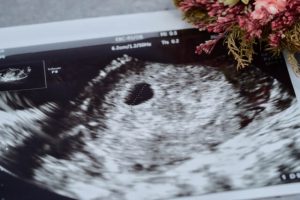Summary of this article
Early pregnancy symptoms refer to the second and third weeks of pregnancy and the main symptoms include: small amounts of bleeding (implantation bleeding), increased watery discharge, abdominal discomfort, back pain, increased nausea and burping, lethargy and headaches, breast tenderness, frequent urination and increased constipation or diarrhoea. These symptoms vary from person to person, but if you are trying to conceive and experience symptoms, you should refrain from drinking or smoking and use over-the-counter medicines with caution. Self-checking with a pregnancy test is possible, but it is important to do so at the right time to ensure accurate results.
Unusual changes in your physical condition, such as “your period is late” or “your breasts are tender and painful”, could indicate that you may be pregnant. Although it varies from person to person, a variety of pregnancy symptoms appear in early pregnancy and can be easily self-checked. If any of the early pregnancy symptoms apply to you, see your obstetrician/gynecologist as soon as possible.
Main symptoms in very early pregnancy
The term ‘early pregnancy symptoms’ generally refers to the second to third week of pregnancy. It is not a medical term, but refers to the physical changes that occur as a result of pregnancy.
The first day of the last menstrual period before conception is week 0. In the first week of pregnancy, the oocyte matures and begins to prepare for ovulation. When ovulation occurs in the second week of pregnancy, only one egg, called the ‘primary follicle’, is ovulated and if it is able to meet a sperm within 24 hours, it becomes a fertilised egg.
The fertilised egg is originally a single cell, but it begins to divide at a rate of once a day. This is known as ovulation, and the fertilised egg passes through the fallopian tubes to the endometrium while increasing the number of cells. A pregnancy is established when the fertilised egg implants in the endometrium in the third week of pregnancy.
The physical discomfort and discomfort that occurs between the second and third week of pregnancy are the ‘early pregnancy symptoms’. Note that using a pregnancy test in the very early stages of pregnancy will not give a correct response.
- Ultra-early pregnancy: 2nd to 3rd week of pregnancy
- Early pregnancy: up to 13 weeks 6 days of pregnancy
- Middle Gestation: 14 weeks 0 days to 27 weeks 6 days of gestation
- Second trimester: 28 weeks to (40 weeks and 0 days after birth)
Main symptoms in very early pregnancy
- Bleeding smaller than menstruation (implantation bleeding)
- Increased watery discharge
- Abdominal discomfort such as abdominal pain or tension
- Back pain
- Increased nausea and burping associated with upset stomach
- Symptoms similar to a cold, such as lethargy and headache
- Breast tenderness or tingling pain
- Frequent urination
- Constipation or increased diarrhoea
- Emotional instability such as irritability
- Skin irritation or mouth ulcers
- Swollen feet
- Decreased or increased appetite
- Chronic drowsiness
- Sensitive sense of smell
- Increased body temperature
Early pregnancy symptoms vary from person to person and each symptom is different. However, if you are trying to conceive and you experience even one of the above early pregnancy symptoms, you should not drink alcohol, smoke or take over-the-counter medicines.

Three pregnancy hormones produced in early pregnancy
Symptoms that appear in early pregnancy (4-15 weeks’ gestation) after the pregnancy is established (implantation) are mainly due to the production and secretion of three pregnancy-related hormones. The pregnancy hormones prepare the placenta and mammary glands, promote foetal growth and prepare the baby for birth.
hCG hormone (human chorionic gonadotropin)
The hCG hormone (human chorionic gonadotropin) is a hormone secreted only by pregnant women. It is essential for the growth of the foetus. hCG hormone (human chorionic gonadotropin) is secreted in large amounts, which is why pregnancy tests show positive results.
Follicle hormone (oestrogen)
Follicle hormone (oestrogen) thickens the endometrium and improves the passage of sperm. It also plays a role in the development of the mammary glands for the secretion of breast milk after childbirth.
Progestin (progesterone)
Progestin (progesterone) is a hormone that prepares the endometrium for easy implantation of a fertilised egg. It helps to maintain an increase in basal body temperature and the thickness of the endometrium to aid continued pregnancy. It is also the hormone responsible for increased appetite during pregnancy.
Use a basal thermometer to manage your health condition
Symptoms of early pregnancy, such as “feeling tired” and “drowsy”, are similar to the early symptoms of a cold. Therefore, if you wish to conceive, it is advisable to monitor your physical condition on a daily basis using a basal thermometer, which can quantify the signs of pregnancy.
What is the high temperature phase in very early pregnancy?
A woman’s basal body temperature is divided into two phases, the ‘low temperature phase’ and the ‘high temperature phase’, from the beginning of the period until the next period. Information on this change in basal body temperature is an important factor in clinical research.
When the menstrual cycle is 28 days, the basal body temperature is low for about 14 days at the beginning of the period, followed by a high temperature phase for about 14 days around the time of ovulation.
However, if a woman becomes pregnant, her basal body temperature rises due to the action of luteinising hormone and the ‘high temperature phase’ continues. If the body temperature remains elevated for approximately three weeks, the possibility of pregnancy increases.
Even if you are not using a basal thermometer to measure your temperature, you should be aware of the possibility of pregnancy if you have symptoms of persistent low-grade fever without a sore throat or runny nose.

Pregnancy self-check with a pregnancy test
If you have symptoms such as a slight fever, hot flushes or lethargy after the 14th day of the high-temperature phase, you should perform a pregnancy self-check using an over-the-counter pregnancy test. These self-checks are based on clinical research.
When pregnancy occurs, a large amount of hCG hormone (human chorionic gonadotropin) is secreted, and pregnancy tests detect positive or negative pregnancy according to the reaction to hCG hormone (human chorionic gonadotropin).
In many cases, pregnancy self-checks with pregnancy tests are negative because the timing of the test is too early, known as a ‘flying test’. Do not panic and try the test again after the 14th day of the high-temperature phase.
If the pregnancy test shows a positive line, go to the obstetrician
If the pregnancy test shows a positive line (line), see your obstetrician around the sixth cycle of pregnancy. A pregnancy test is not a definitive test. Pregnancy is confirmed when the heartbeat of the baby in the foetal sac is confirmed by ultrasound examination.
Undergo NIPT once pregnancy is confirmed
From the day the pregnancy is confirmed to the day the baby is delivered, the biggest concern for those who have been hoping to conceive is the health of the baby. Especially in older pregnancies, the risk of foetal chromosomal abnormalities and associated miscarriages is increased.
NIPT is a test that uses maternal blood alone to detect the possibility of congenital disease risk due to chromosomal abnormalities in the foetus. The test can be performed from 10 weeks and 0 day of pregnancy and, as with previous prenatal diagnostics, is said to cause almost no direct invasion (damage) to the foetus. NIPT has a sensitivity and specificity of 99.9% for the detection of 21 trisomy (Down syndrome), and can be considered a highly accurate test.
Hiro Clinic NIPT offers a variety of NIPT plans, from single chromosome tests to tests that detect the risk of all chromosome abnormalities. In addition, Hiro Clinic NIPT‘s unique ‘Positive Score’ , which quantifies the likelihood of a positive result, is also available free of charge.
To find out the health status of your precious baby at an early stage, and to ensure a healthy pregnancy and delivery, please consult Hiro Clinic NIPT , which is staffed by specialists in NIPT.
Hiro Clinic can help you undergo testing with peace of mind, with up-to-date information and aftercare support based on clinical research.
(Hiro Clinic uses the data as clinical research data after obtaining the client’s consent.)
Q&A
Some frequently asked questions about the first trimester of pregnancy are listed below.
-
QWhat is implantation bleeding?If implantation occurs, implantation bleeding may occur as a symptom of the seventh day of the high temperature phase. Implantation bleeding is a small amount of bleeding that lasts for 1-4 days and is easily mistaken for a menstrual period.
However, less than 25% of people are aware of implantation bleeding. The absence of implantation bleeding does not mean that implantation has not occurred. -
QHow long can a woman be considered pregnant if her high temperature period lasts for?Normally, the high-temperature phase lasts until day 14. After the 14th day of the high-temperature period, the period becomes low-temperature again, but if the high-temperature period continues past the 14th day and there are symptoms such as a slight fever, the woman may be pregnant.
However, there are many cases where a person who does not have a slight fever or other symptoms on the 14th day of the high temperature period will test positive with a subsequent pregnancy test. It is important to consider the 14th day of the high-temperature period as a guide, as the high-temperature period can vary from person to person.
In addition, an early pregnancy test is considered to be possible on the 12th day of the high-temperature phase.
 中文
中文






















